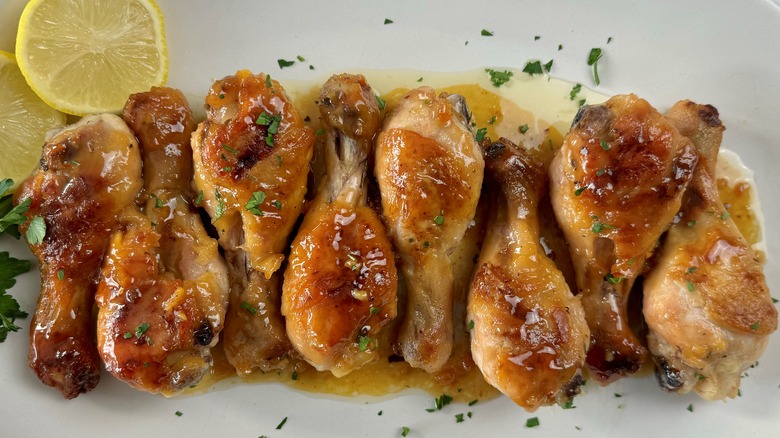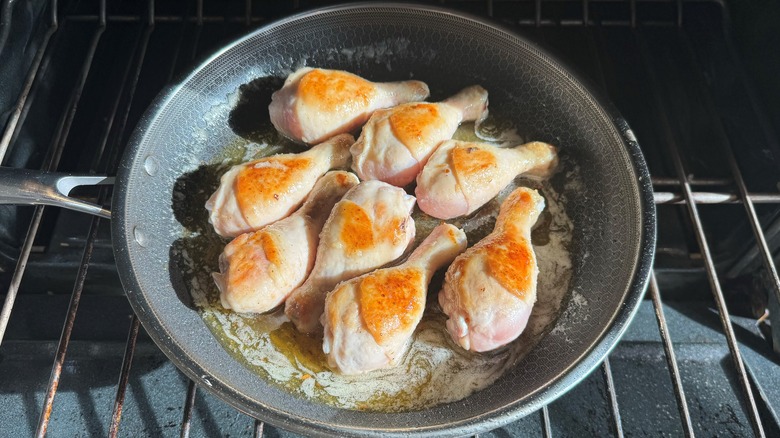How To Prevent Your Chicken's Honey Glaze From Burning While It Cooks
A sticky, sweet glaze will always elevate chicken, no matter the occasion. A good maple syrup and bourbon concoction or a blueberry-lavender sauce is delicious, but a simple honey glaze with chicken will forever be a classic combination. Thanks to its versatility, honey brings a lot of flavor to food. However, during the caramelization process, the sugars in honey dissipate quickly; as such, it's easy for a honey glaze to quickly turn from dark and rich to burnt and charred.
Thankfully, in her honey butter chicken drumsticks dish, recipe developer Julianne De Witt found a way to help prevent this. When cooking on the stovetop, the heat can flare up, resulting in burnt honey. So, De Witt browns her chicken, then coats it in the honey glaze before finishing it up in the oven.
According to De Witt, this method "provides an even temperature for the sauce to thicken without burning." Once the chicken's exterior is browned, melt down some butter and simmer it with some honey, just long enough for the two to be thoroughly combined. Toss the chicken in the sweet glaze, and bake it at 350 degrees Fahrenheit for 30 minutes, or until the drumsticks reach an internal temperature of 165 degrees Fahrenheit. With this temperature, the chicken can bake evenly without the honey scorching.
More ways to prevent honey glazes from burning
Although honey glazes are delicious, you may need to adjust your cooking method depending on what the glaze is going on. For food that stays longer in the oven, the temperature needs to be decreased. Alternatively, you can also limit the amount of time the food stays in the oven. When roasting carrots, a root vegetable, some people like to leave them in for up to 40 minutes to ensure that the interior is soft. However, with honey-glazed carrots, they should cook for over 20 minutes, but not exceeding 30 minutes, since honey cooks quickly and shouldn't be left in the oven for a prolonged period.
For crispier food, you'll need to apply the glaze before increasing the heat. To achieve the charred finish that's integral to spicy honey-glazed salmon, broiling is a requirement. This can reach temperatures of up to 550 degrees Fahrenheit, so an extra coating of honey is necessary to prevent the glaze that's already been heated from burning. Honey can easily burn at higher temperatures, so broil the salmon for no more than three minutes.
If you do want to cook food with a honey glaze on the stovetop, it's not impossible — all you need is some water. When caramelizing, the liquid in honey evaporates first, before the sugars. A splash of water will delay the sugars from cooking too quickly, giving you time to properly heat your food.

